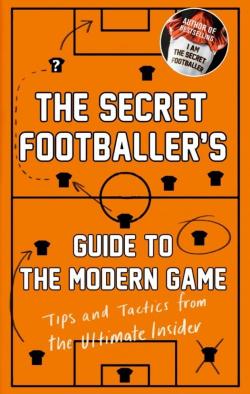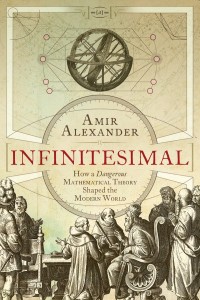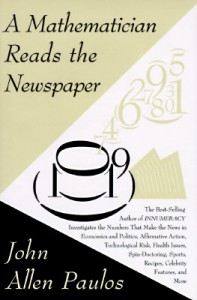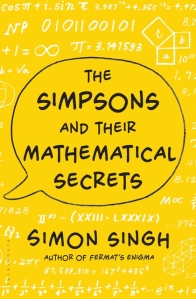 The Secret Footballer’s Guide to the Modern Game: Tips and Tactics from the Ultimate Insider, The Secret Footballer (Guardian Books 2014)
The Secret Footballer’s Guide to the Modern Game: Tips and Tactics from the Ultimate Insider, The Secret Footballer (Guardian Books 2014)
Who is the Secret Footballer? I don’t know. But he’s definitely a Guardianista. You can tell this by two things: 1) he’s passionately committed to the fight against “homophobia, sexism, racism and everything in between”; 2) he uses “in terms of” a lot. Interviewing another concealed component of the crypto-community, The Secret Physio, he asks this:
TSF: So would players need to train differently from one another in terms of the weights they lift and the core work they do? (ch. 1, “Getting Started”, pg. 14)
“Core” is also Guardianese and maybe he’s really interviewing himself, because the Secret Physio uses “in terms of” too. I didn’t spot the incendiary slam-dunk of a mixed metaphor anywhere, but he does claim that Wayne Rooney is “one of quite literally only a handful of players” who matter a lot to Manchester United’s profits (ch. 4, “It’s Football, But Not As We Know It”, pg. 116). So case proven: he’s a Guardianista.
But he’s also worth reading and this is his most interesting book. He talks about world football and the game in general, not just his life in the Premier League, and he seems to know his stuff. I don’t. To me football is like music: I appreciate it without understanding it. I know what players, teams and matches I like, but I don’t have a clue about tactics or formations.
The Secret Footballer combines appreciation with understanding, so it’s gratifying that he praises three of my favourite players: Glen Hoddle, Matt Le Tissier and Dennis Bergkamp. He says that Hoddle proved that “an entire football nation did not know what to do with skill and finesse” (Epilogue, pg. 218) and lists Le Tissier and Bergkamp among the scorers of “The goals that influenced me most”. This is Le Tissier’s:
…his finest goal, in my opinion, came against Newcastle in 1993. It is so skilful that it deserves to grace most lists. The three touches he takes to get the ball under control while beating a defender at the same time are by no means easy and all have to be perfect. I later read that the slightly scuffed finish had taken the gloss off it for Le Tissier himself, but, for me, it serves as a lesson in composure for every kid who wants to be a striker. (ch. 1, pp. 52-3)
This is Bergkamp’s, against Newcastle in 2002:
Almost every other player I have seen would try to control the horrible bouncing ball that comes into him. But Bergkamp, with his back to goal, flicks it to one side of the defender and runs the other, using his strength to outmuscle the defender and find the calmest of finishes. For a long time, some people debated whether or not Dennis had actually intended to do what he did here. Like so many others, those people don’t truly understand football. (Ibid., pg. 54)
But what does it mean to “truly understand football”? Ultimately, it means using mathematics. There’s maths everywhere in football and everywhere in this book, from the topspin on a free kick (ch. 1, pg. 41) to 4-2-3-1, “the most in-vogue formation in modern football” (ch. 6, “Formations”, pg. 158). A good footballer has to be both an athlete and an expert in reading and responding to patterns. The movement of players on the field sets constantly shifting problems in combinatorics, for example. There’s no entry for “Mathematics” in the index, but then there’s no entry for “English language” either. This book is written in English and is talking about maths, implicitly but intensively.
That’s as true in the section about diet as it is in the section about using spin in free-kicks. One is physiology, the other is physics, but they both involve the interaction of entity that is the essence of mathematics. The spin of the ball affects its interaction with the air. Chemicals in the body affect its interaction with play: its strength, stamina, flexibility and so on. That’s why diet is so important. But chemicals are important in other ways. To physiology and physics you can add physiognomy, as a recent scientific paper shows:
The structure of a soccer player’s face can predict his performance on the field – including his likelihood of scoring goals, making assists and committing fouls – according to a study led by a researcher at the University of Colorado Boulder.
The scientists studied the facial-width-to-height ratio (FHWR) of about 1,000 players from 32 countries who competed in the 2010 World Cup. The results, published in the journal Adaptive Human Behavior and Physiology, showed that midfielders, who play both offense and defense, and forwards, who lead the offense, with higher FWHRs were more likely to commit fouls. Forwards with higher FWHRs also were more likely to score goals or make assists. (Facial structure predicts goals, fouls among World Cup soccer players, ScienceDaily, 12/xi/2014)
Facial structure is influenced by testosterone, which also influences competitiveness and aggression. And testosterone itself is influenced by genetics. Football was invented and is still dominated by men. That won’t change until the human race changes. And it will be men who invent the means for the human race to change.
Or rather: the human races, because there are a lot of them. The big ones – Europeans, Africans and Asians – are all represented in this book and the Secret Footballer writes a lot about genetic differences, even though he doesn’t know it. And would be horrified by the claim that it matters. As a Guardianista, he knows we’re all the same under the skin and that environment is responsible for the way blacks contribute little to science and mathematics. Blacks contribute a lot to football, but not as managers and not as certain types of player: goalkeeper, for example.
Why not? The Secret Footballer would say it’s racism and lack of opportunity. I would say it’s lack of intelligence. But lack of intelligence is due to racism and lack of opportunity too, isn’t it? No, I’d say it’s due to genetics. Why is the performance of the brain less influenced by genes than the performance of the muscles? It isn’t. Sadly for Guardianistas, hateful stereotypes like this are based on a hateful genetic reality:
Speedboat, no driver: Refers to a player who has blistering pace but no clue where he is supposed to be running or when. Controversially, this phrase is typically used for young black players. There are lots of managers who do not trust black players with the disciplined side of the game and just tell them to run instead – I even had a manager who did not want to play black centre-halves because he was convinced that they had tunnel vision and didn’t read the game well. I can’t disprove it one way or another, though it sounds ridiculous to me. However, I’m here to tell you that lots of managers feel this way and I’ve lost count of managers, coaches, academy coaches and players who describe young black players using this term. It’s even been said to me on the pitch by an opposition player when we brought on a young black player in the second half. (“Appendix: The Guide to Modern Football Language”, pg. 228)
Genetics at work, in my opinion: the environment of Africa selected for athletic ability but not high intelligence. Football is not just a beautiful game. It’s a bountiful one too, because it offers so many patterns to analyse: patterns of play, of history, of culture, race, human behaviour and biology in general. The Secret Footballer discusses all of them, sometimes without realizing it. He’s interesting, opinionated and obsessed with the game. I’m not and never have been, but this book woke memories of the days when I cared much more about twenty-two men chasing an inflated sphere around a rectangular field.
Perhaps I should care more now, because the game has never stopped evolving and improving, as the Secret Footballer will show you. There are some exciting names in his list of the “ten best players of the last twenty years”: Lionel Messi, Zinedine Zidane, Cristiano Ronaldo, Xavi Hernández, Ronaldinho, Paul Scholes, Paolo Maldini, Thierry Henry, Ryan Giggs, Andrés Iniesta (ch. 6, pg. 186). He also offers his “ten best players of the future playing now” (ch. 7, “Coaching”, pg. 206) and lists the “best young players you probably haven’t heard of… yet” (ch. 3, “Fashion in Football”, pg. 104) And where does he stand on one of the great questions of our time? Here:
Cristiano Ronaldo once said that God put him on this planet to play football. We’ll just have to ask Lionel Messi if he remembers doing that. (ch. 8, “Whatever Happens, Never, Ever Give Up”, pg. 215)
There’s also Nike vs Adidas, Mark Viduka singing Monty Python in Middlesbrough and an explanation of why England are so bad. And for once a good popular book isn’t spoilt by a bad literary omission, because there’s a detailed index. I don’t like the Guardian, but it occasionally comes up with good things and this guide is one of them.
Read Full Post »







